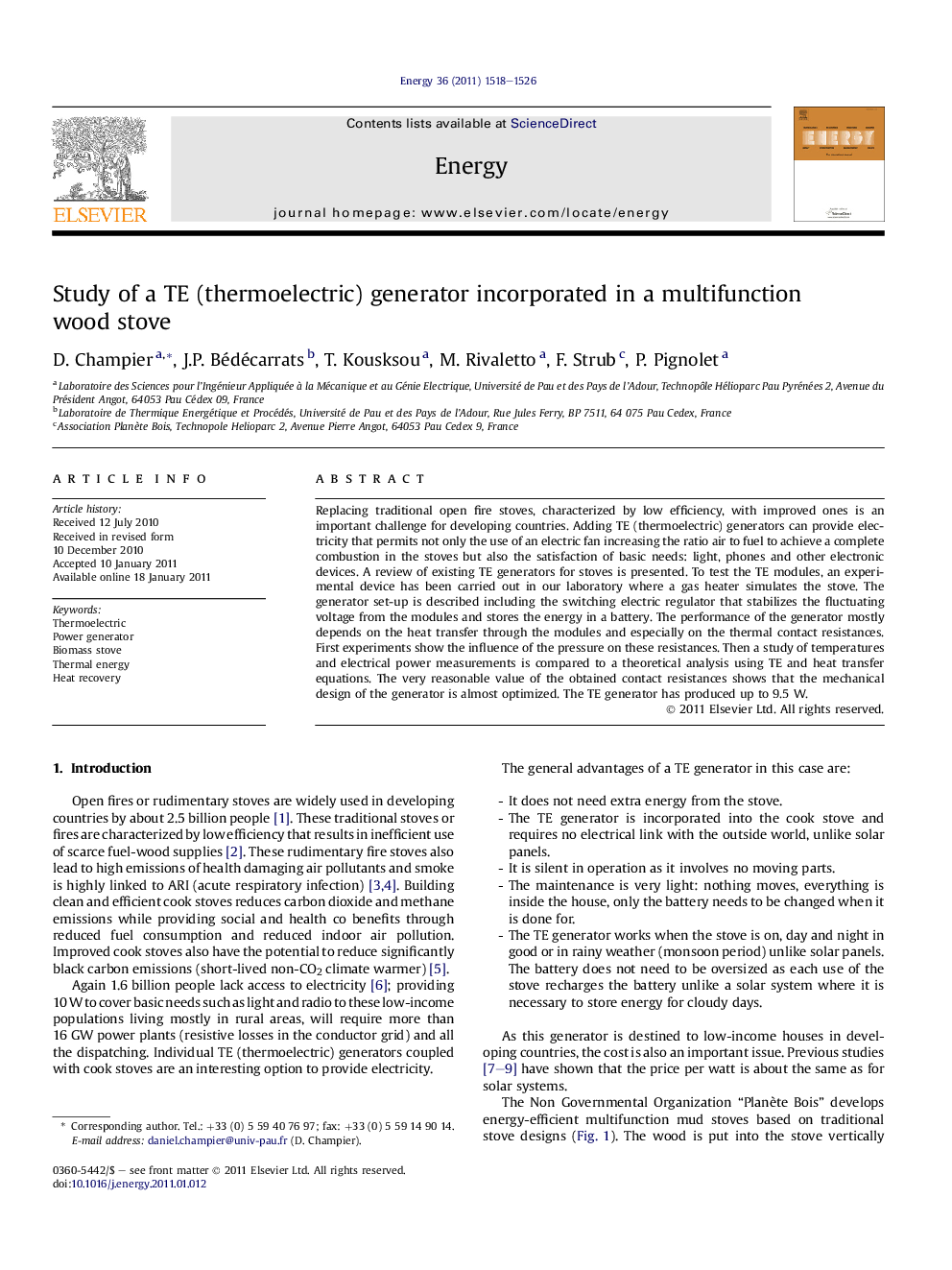| Article ID | Journal | Published Year | Pages | File Type |
|---|---|---|---|---|
| 1735113 | Energy | 2011 | 9 Pages |
Replacing traditional open fire stoves, characterized by low efficiency, with improved ones is an important challenge for developing countries. Adding TE (thermoelectric) generators can provide electricity that permits not only the use of an electric fan increasing the ratio air to fuel to achieve a complete combustion in the stoves but also the satisfaction of basic needs: light, phones and other electronic devices. A review of existing TE generators for stoves is presented. To test the TE modules, an experimental device has been carried out in our laboratory where a gas heater simulates the stove. The generator set-up is described including the switching electric regulator that stabilizes the fluctuating voltage from the modules and stores the energy in a battery. The performance of the generator mostly depends on the heat transfer through the modules and especially on the thermal contact resistances. First experiments show the influence of the pressure on these resistances. Then a study of temperatures and electrical power measurements is compared to a theoretical analysis using TE and heat transfer equations. The very reasonable value of the obtained contact resistances shows that the mechanical design of the generator is almost optimized. The TE generator has produced up to 9.5 W.
► 9.5 W TE (thermoelectric) generator for biomass stove. ► The performance of the TE generator mostly depends on the thermal contact resistances. ► 500 kPa (5 bar) is a reasonable value to minimize the contact resistance for the TE modules. ► A one module TE generator can produce around 7.6 W of stabilized electricity with an economic cost competitive with solar panels.
